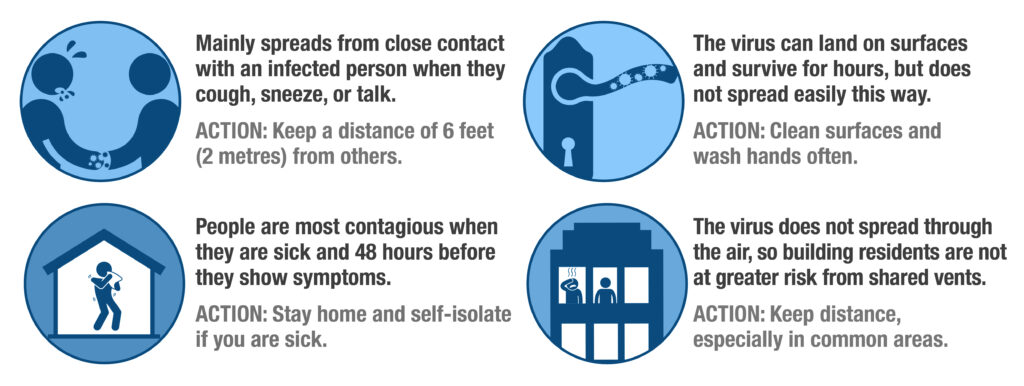COVID-19 & How it Spreads

On December 31, 2019, Chinese health authorities identified a new (or novel) coronavirus (referred to as COVID-19) through a series of reported cases of pneumonia in Wuhan, China. It is thought that this new coronavirus originated in animals.
Coronaviruses are a large family of viruses that circulate both in humans and animals. Human coronaviruses are common and are typically associated with mild illness, similar to the common cold and spread easily between people. There are however, strains of coronaviruses that have spread from animals to humans which have caused more severe illness in humans in the past, such as Severe Acute Respiratory Syndrome (SARS) and Middle East Respiratory Syndrome (MERS). These tend to have more difficulty spreading from person to person.
COVID-19 spreads through the direct contact with the respiratory droplets of someone who is infected with the virus through their cough or sneeze. These droplets can spread up to 2 metres, or 6 feet. It may also be possible for a person to get COVID-19 by touching a surface or object that has the virus on it and then touching their own mouth, nose, or possibly their eyes.
